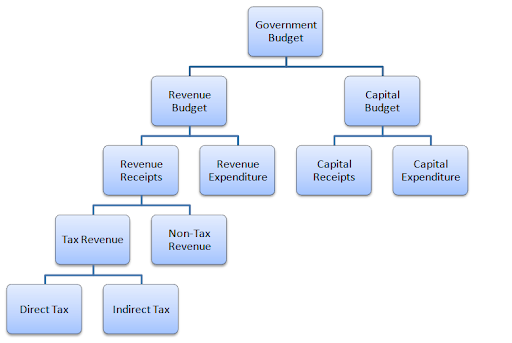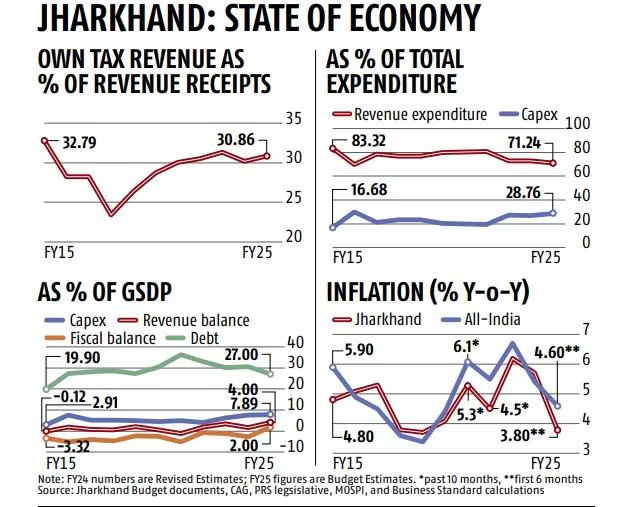State’s Financial Landscape | 28 Oct 2024
Why in News?
Recently, the assembly election in Jharkhand has intensified, with both the ruling and opposition alliances launching economic initiatives aimed at garnering voter support.
Key Points
- Revenue Generation:
- Jharkhand generates only about 30.8% of its revenue receipts through its own tax collection, creating dependency on central government allocations.
- Pension Schemes:
- The state has expanded a universal pension scheme, reducing the age of eligibility from 60 to 50 for marginalized groups (Dalits, Adivasis, and women).
- The government supplements central pension funds, adding Rs. 240.4 crore to ensure that each recipient gets a monthly Rs. 1,000.
- Committed Expenditures:
- Salaries, pensions, and interest payments absorbed over one-third of Jharkhand’s revenue receipts in FY24, limiting fiscal flexibility for development projects.
- Capital Expenditure Focus:
- Jharkhand has prioritized capital expenditure, aiming to reach 7.89% of its GSDP in FY25, a substantial rise from 2.91% in FY15.
- The state’s capex-GSDP ratio is higher than many states, with a recent 7.57% in FY24, well above the national average of approximately 4.9%.
- Higher capex helps in creating assets that may boost long-term growth, despite current fiscal constraints.
- Fiscal Surplus and Debt Challenges
- Jharkhand has remained revenue-surplus for most years, except in FY15 and during the COVID-19 pandemic in FY21, maintaining a fiscal deficit of 2% (down from a high of 5.2% in FY21).
- Debt-to-GSDP Ratio:
- Jharkhand’s debt-to-GSDP ratio peaked at 36% in FY21 and remains high, projected at around 27% for FY25, though previous estimates have been revised upwards.
- The Reserve Bank of India ranked Jharkhand among the top 10 states with the highest debt-to-GSDP ratios, highlighting concerns over long-term debt sustainability.
- Economic Indicators and Social Challenges
- Unemployment: Jharkhand has a relatively low unemployment rate of 1.3% (2023-24), significantly below the national average of 3.2%.
- Poverty Levels: Jharkhand faces high multidimensional poverty, with 28% of residents experiencing deprivation, second only to Bihar (33.7%).
- Inflation:
- Overall Inflation: Declined to 3.8% in the first half of the financial year, below the national rate of 4.6%.
- Food Inflation: Rose to 8.9% in September, higher than the national 8.4%, while the average food inflation rate from April to September was 6.7%, still below the national trend.
- Conclusion: With the Jharkhand Assembly elections approaching, both the ruling coalition and opposition alliance are engaging in competitive social welfare and economic proposals to sway the electorate, amidst a backdrop of fiscal challenges, poverty, and inflationary pressures.


